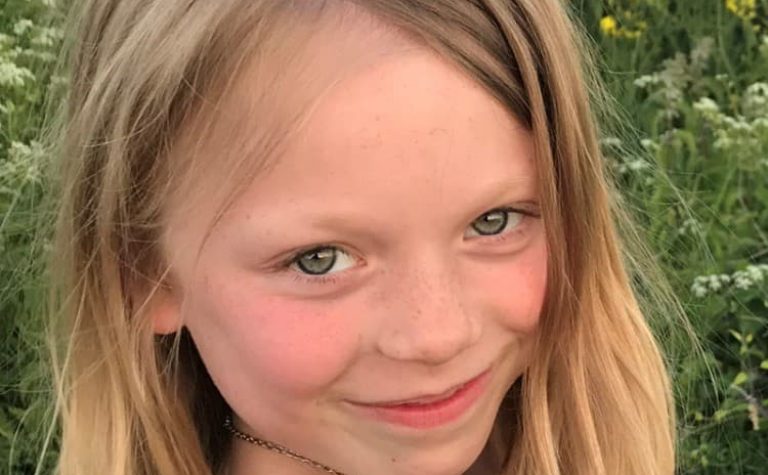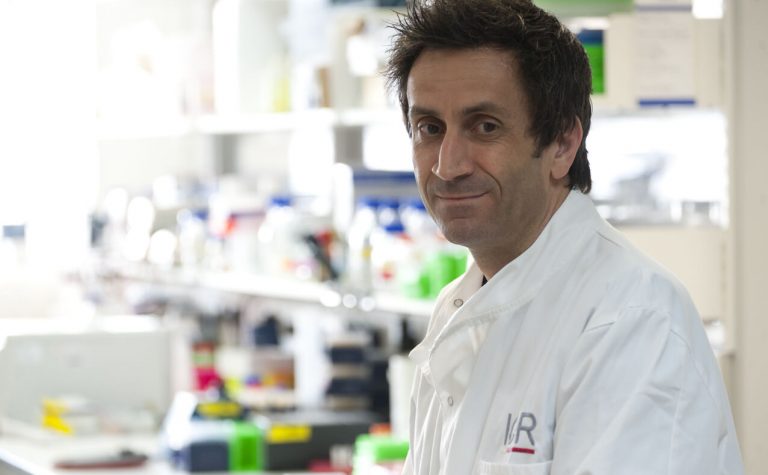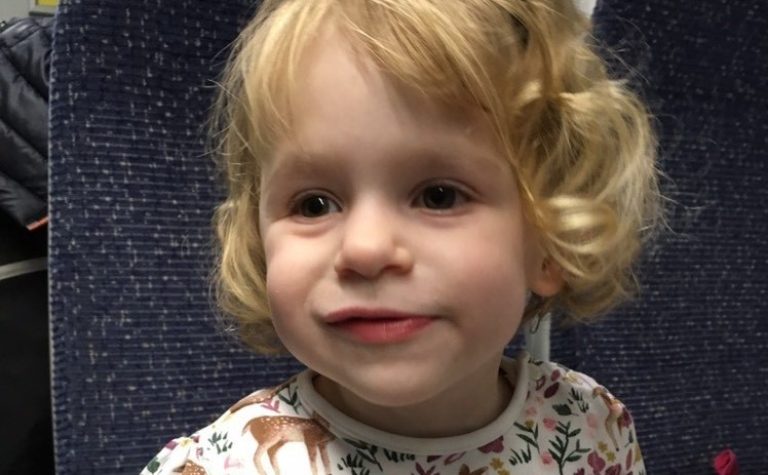What type of cancer are brain & CNS tumours?
Brain and spinal tumours affect the Central Nervous System known as the CNS. They come from different types of cells in the brain and are classified according to the cell type and area of the CNS in which they began. Most CNS tumours start in glial cells, the supporting cells of the brain.
Cancerous brain tumours that start in glial cells are known as gliomas and include astrocytomas, ependymomas and oligodendrogliomas. Another group of tumours arise from embryonal cells. These tumours include medulloblastoma and PNET. That is short for primitive neuro-ectodermal tumour. Altogether there are more than 100 different types of brain tumour, most of which are very rare.
Tumours classified as low grade are very slow growing and remain in the part of the brain in which they started. High grade brain tumours are likely to be more aggressive in spreading into the brain tissue which surrounds them. This can cause pressure and damage to the surrounding areas.
For example, astrocytomas are themselves divided further into four grades:
- Grade 1: pilocytic astrocytoma;
- Grade 2: diffuse or low grade astrocytoma;
- Grade 3: anaplastic astrocytoma; and
- Grade 4: glioblastoma.
Signs and symptoms of brain tumours
Brain tumour symptoms will vary between age groups.
Brain tumour symptoms in babies may include:
- Persistent/recurrent vomiting
- Balance/co-ordination/walking problems
- Abnormal eye movements or suspected loss of vision
- Behaviour change, particularly lethargy
- Fits or seizures (not with a fever)
- Abnormal head position, such as wry neck, head tilt or stiff neck
- Increasing head circumference
Brain tumour symptoms in children may include:
- Persistent/recurrent headache
- Balance/co-ordination/walking problems
- Persistent/recurrent vomiting<
- Abnormal eye movements
- Blurred or double vision/loss of vision
- Behaviour change
- Fits or seizures
- Abnormal head position, such as wry neck, head tilt or stiff neck
Brain tumour symptoms in teenagers may include:
- Persistent/recurrent headache
- Balance/co-ordination/walking problems
- Persistent/recurrent vomiting<
- Abnormal eye movements
- Blurred or double vision/loss of vision
- Behaviour change
- Fits or seizures
- Delayed or arrested puberty
Incidence
Over 400 children a year are diagnosed with brain, CNS or intracranial tumours in Great Britain (1). They are the second most common group of cancers and the most common group of solid tumours that occur in this age group, accounting for more than a quarter (26%) of all childhood cancers in Great Britain (1)
Diagnosis
What would you expect to happen first, when you see your GP?
The signs and symptoms of brain tumours vary according to the type and site of the tumour. If the tumour is low grade the symptoms come on much more slowly.
HeadSmart is a project that aims to enhance the awareness of symptoms of brain tumours in children and young people led by The Brain Tumour Charity. Their website provides detailed information on brain tumour symptoms in children of different age groups.
If a brain tumour is suspected, diagnosis will be confirmed by a brain scan using CT or MRI. Further investigations will be carried out to ascertain the type of tumour and determine the best course of treatment.
Treatment
What would you expect to happen during treatment?
Brain tumour treatment will vary according to the precise type of tumour, its grade, its position and the extent to which it may have spread. Doctors will carry out a range of tests to obtain this information, including taking a biopsy and the use of a CT or MRI scan.
The main treatment for most brain tumours in children is surgery. If a tumour cannot be completely removed surgically, or if there is a chance that some cancer cells have been left behind, radiotherapy may be given afterwards. Radiotherapy may also be used as the main treatment if surgery is not possible, however, it is usually avoided in children under the age of three years, as there is a greater risk of harm to the developing brain.
Chemotherapy is used routinely to treat medulloblastoma and is increasingly being used to treat other types of brain tumours. It may also be used in situations where the tumour cannot be removed completely with surgery.
You may be given steroids. These do not treat the tumour but can improve symptoms by reducing the swelling that often surrounds brain tumours. Anti-convulsants may also be given to prevent fits.
Other possible treatments may be considered such as proton beam therapy, this is a form of radiotherapy. Higher doses of chemotherapy which kill the bone marrow cells as well can be given but with stem cell rescue. Stem cells are collected prior to the treatment and given afterwards.
What is happening in the body and are there any side effects?
Brain and spinal cancer treatment often causes side effects, these will depend on the exact treatment being given but may include:
- Hair loss
- Tiredness
- Nausea and vomiting
- Reduced resistance to infection
- Bruising
- Anaemia.
These problems are temporary and can be minimised with good supportive care. Treatment can also cause long-term effects, outlined under Follow-up below.
A number of children may develop persistent side effects as a result of treatment, sometimes many years later, these are known as late effects. These can include
- a reduction in normal bone growth
- reduced fertility
- a change in heart function
- a small increase in the risk of developing a second cancer later in life
How effective are the treatments – What are the survival rates?
Children will have regular follow-ups to monitor their progress, to check for any signs of relapse and for any problems that may arise as a result of the treatment they have received.
Treatment by surgery, radiotherapy or chemotherapy may affect a child’s physical and intellectual development. The risk is greater in children who are very young as their brain is growing quickly. Thus it follows that different treatments may be recommended for children of different ages.
The possible risks of any treatment given will be explained by the child’s doctor before treatment begins.
The average 5-year spinal and brain tumour child survival rate varies widely between tumour subgroups.
The average 5-year spinal and brain tumour child survival rate is 74% in England (2), but this figure varies widely between tumour subgroups.
In teenagers and young adults (those between 15 and 24 years old) the average 5-year survival rate of brain, other central nervous system (CNS) and intracranial tumours in the UK is 79.9% for young men and 82.5% for young women (3), but these figures vary widely between tumour subgroups.
Astrocytomas account for around 43% of children’s brain, CNS or intracranial tumours in Great Britain1 and have an average 5-year survival rate of 81% in England (2).
Childhood ependymomas and choroid plexus tumours have an average survival rate of 76% in England, and childhood medulloblastomas tumours have an average survival rate of 63% in England (2).
Diffuse Intrinsic Pontine Glioma (DIPG) is considered to be incurable. Sadly, most children die within months of diagnosis and fewer than 10% live longer than two years (4,5)
Brain, CNS and intracranial tumours are the greatest cancer-related cause of death in children in the UK, causing around 35% of cancer deaths (over 85 children per year) (6). When Rhiley was two years old she was diagnosed with a rare tumour called ATRT that started in her spine and spread to her brain. Read her ATRT cancer story to learn more.
Olivia was diagnosed with a brain tumour at the age of nine. After years of treatment, she sadly passed away. Learn more about Olivia’s story – How I found out my child had a brain tumour.
Can it come back?
Relapse means that the tumour recurs, either in the same site as the original tumour or in a new site. Both benign and malignant tumours can recur. It is therefore important for the child to have regular follow up appointments and MRI scans.


